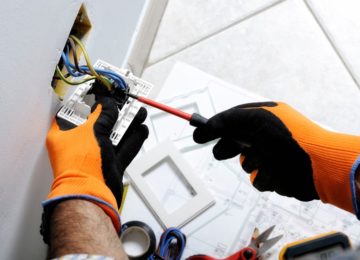The COVID-19 pandemic has significantly impacted our daily lives, bringing about dramatic changes and disruptions to various aspects, including the real estate industry. Traditional property viewings have become challenging to conduct safely, making it essential to find an effective solution.
Real Estate Virtual Tours 3D have emerged as the answer to this challenge. These cutting-edge tools enable potential clients to explore properties remotely, from the convenience of their own homes, using just a computer or mobile device. As a safe and efficient alternative to physical viewings, virtual tours are rapidly becoming the gold standard in property marketing.
An In-Depth Look at Real Estate Virtual Tours
Real Estate Virtual Tours provide immersive experiences that utilize 3D modeling and other advanced technologies to craft a lifelike representation of a property. These tours enable viewers to virtually examine the space of a property from every angle, familiarizing themselves with the layout, design, and unique features.
Accessible from anywhere around the globe, virtual tours grant prospective buyers the opportunity to explore properties they might not have been able to visit in person. Moreover, with 24/7 availability, potential clients can conveniently examine a property at any time that suits them.
Advantages of Virtual Tours for Buyers
Real Estate Virtual Tours offer several notable benefits for buyers. Firstly, they save time and energy by enabling potential clients to virtually explore multiple properties from the comfort of their homes. Consequently, buyers can efficiently narrow down their choices and focus on the properties that truly pique their interest.
Compared to traditional photos or videos, virtual tours present a more comprehensive and accurate representation of a property. Buyers can easily visualize the layout, observe how each room connects to the next, and even zoom in on specific features or details, such as fixtures and fittings, for closer inspection.
Lastly, virtual tours cater to the safety concerns of buyers apprehensive about the risks associated with in-person viewings. They can thoroughly examine properties while avoiding potential hazards to themselves or others, which is especially crucial during the ongoing pandemic.
Advantages of Virtual Tours for Sellers
Real Estate Virtual Tours also present numerous benefits for sellers. Firstly, they help to attract a larger pool of potential buyers. By offering a high-quality, immersive representation of the property, sellers can effectively convey what the property has to offer and pique the interest of potential buyers.
Virtual tours also contribute to reducing the number of physical viewings required, saving sellers valuable time and energy. Rather than hosting numerous viewings for potentially uninterested clients, sellers can utilize virtual tours to pre-qualify buyers and concentrate their efforts on those genuinely interested in the property.
Moreover, virtual tours can accelerate the property selling process. Buyers who have already investigated a property virtually are more likely to place an offer, as their comprehensive understanding of the property makes them more confident in their decision.
Final Thoughts
Real Estate Virtual Tours are paving the way for the future of property viewing. They provide a convenient, secure , and immersive experience that benefits both buyers and sellers. With the continued disruptions caused by the ongoing pandemic, virtual tours have proven to be an invaluable tool for anyone looking to buy or sell properties.
In addition to addressing current safety concerns, virtual tours are likely to continue gaining popularity even after the pandemic subsides. The convenience and efficiency they offer to both buyers and sellers will continue to shape the future of the real estate industry.
Furthermore, as technology continues to advance, we can expect Real Estate Virtual Tours to become even more sophisticated and realistic, enhancing the overall experience for buyers and sellers alike. In the world of property transactions, virtual tours are evolving from a mere trend to an indispensable tool, forever changing the way we view and interact with real estate.
Embracing the Future: Adapting to Virtual Tours
Real estate professionals and property owners are quickly realizing the importance of incorporating virtual tours into their marketing strategies. Here are some ways in which they can adapt and optimize their virtual tours to cater to the ever-evolving needs of clients:
1. High-Quality Imagery: To create immersive and compelling virtual tours, professionals should invest in high-quality 3D imagery and expert camera equipment to capture detailed images and videos of the properties. This will ensure that potential buyers can effectively visualize the property and accurately experience the space.
2. Interactive Floor Plans: Adding interactive floor plans to virtual tours will not only allow clients to navigate seamlessly through the property, but also offer a more comprehensive understanding of the layout, room sizes, and overall structure.
3. Virtual Staging: Professionally staged properties have been proven to sell faster and at a higher price. For an enhanced virtual tour experience, real estate professionals can virtually stage the properties using digital furnishings, artwork , and decorations to showcase the potential of each space to potential buyers. This can help buyers visualize the property as a future home and spark interest in making an offer.
4. Integration with Online Platforms: Promoting virtual tours on multiple online platforms, such as real estate websites, social media channels, and popular listing sites is crucial to reach a wider audience. Easy access to virtual tours can attract a larger pool of potential buyers and increase visibility for the property.
5. User-Friendly Interface: Ensuring that virtual tours are easy to navigate and accessible on multiple devices, such as smartphones, tablets, and computers, will cater to a broader audience. A seamless user experience is essential for retaining viewer interest and encouraging in-depth exploration of the property.
6. Providing Detailed Information: Including essential property information, such as room dimensions, features, amenities, and nearby attractions, can help potential buyers make more informed decisions. The added information can also make the virtual tour experience more immersive and engaging for viewers.
7. Offering Virtual Consultations: Combining virtual tours with live virtual consultations or personalized video tours hosted by real estate agents can significantly improve the overall experience for potential buyers. These consultations can help address clients’ questions, provide additional insights into the property, and build trust between the agent and buyer.
8. Regular Updates: Keeping virtual tours updated with any changes or improvements to the property is essential in providing an accurate representation. Regularly updating the information and imagery ensures that potential buyers have the most up-to-date knowledge about the property they are interested in.
9. Gathering Feedback and Analytics: Collecting feedback from clients who have engaged with the virtual tour allows real estate professionals to improve and enhance the experience for future users. Additionally, analyzing data on user behavior and engagement can provide valuable insights that can be used to optimize the marketing strategy further.
10. Integrating Virtual Reality (VR): As technology advances, incorporating VR capabilities into virtual tours can create a more immersive and realistic experience for potential buyers. By enabling users to explore properties using VR headsets, real estate professionals can offer a unique and engaging way for clients to view and envision themselves in the space.
Embracing Real Estate Virtual Tours Today
As the real estate industry continues to adapt to the rapidly changing landscape, Real Estate Virtual Tours are now an indispensable tool for both buyers and sellers. Virtual tours not only cater to current safety concerns but also offer convenience, efficiency, and a more accessible property viewing experience.
By keeping up with advancing technology and continually optimizing and improving their virtual tours, real estate professionals can stay ahead of the curve and provide a valuable service to their clients. In this ever-evolving digital age, Real Estate Virtual Tours are no longer a novelty but rather an essential component of the property marketing process that is here to stay.











